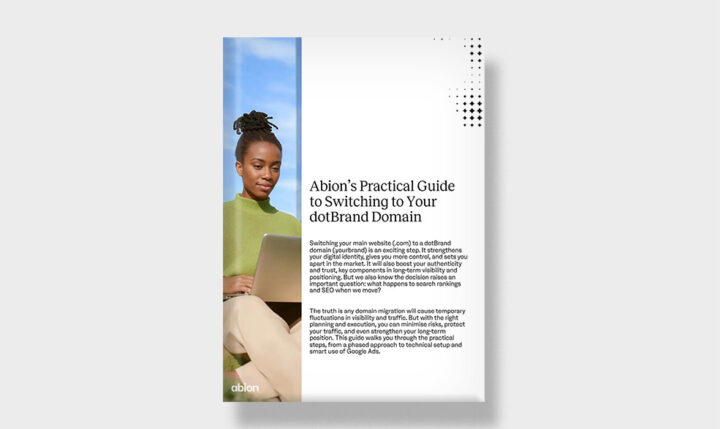
Design protection to secure your product’s value
Design protection, or design patent, is a supplement to your trade mark protection in order to ensure exclusive rights to your designs. If you have a product and you want to protect the design, pattern, or shape you can apply for design protection. Contact us and we will help you!
Prevent Copying
Protects your design from being copied or imitated by competitors.
Stay Competitive
Secures your unique design, giving you a competitive edge.
Boost Business Value
Increases your brand's value by safeguarding intellectual property.
Protect your product’s design
Developing a unique design costs both time and money. Design protection is proof that you have exclusive rights to your design and protects you so that no one else can copy it. We will help you with:
- Planning and strategy covering which countries you should apply in
- The legal aspects required for an application
- Identifying potential business risks
- Administration and management of your design protection


Which designs can be protected?
You can register a design if it has a specific, unique look you want to protect. This applies to products like furniture, toys, packaging, fabrics, cars, patterns, app designs, or icons. Design protection gives you exclusive rights, preventing others from copying or using your design without permission.
To qualify, the design must be new and not have been publicly available for more than 12 months before applying. It should also have a distinctive appearance that sets it apart from other designs. If these conditions are met, your design can be protected nationally and internationally.
Benefits of Design Protection with Abion
Need Help with Design Protection?
If you're looking to protect your designs or more information about design protection, reach out to our experts!
International Design Protection Strategies
For businesses operating across borders in today’s global market, securing international design protection is crucial. There are several pathways to achieve this, including:
- Direct applications in individual countries
- The Registered Community Design (RCD) for EU-wide protection
- The Hague System for broader international coverage
Each method has its advantages and complexities, requiring careful consideration of your business needs and market presence.
The Hague System simplifies the process of securing international design protection by allowing a single application for multiple countries, managed by the World Intellectual Property Organization (WIPO). This system offers a streamlined approach, reducing the administrative burden and costs associated with filing in multiple jurisdictions. However, it’s important to check that the target countries are Hague Agreement members (e.g., the U.S. and Japan are members, but countries like Canada and India are not).
In international design protection, priority dates hold significant importance. By filing design applications in countries outside the UK within six months of the UK filing date, you can claim a priority date, ensuring that your design is protected from the earliest possible date in multiple jurisdictions. This strategic approach helps safeguard your designs from potential infringements on a global scale.
Filing for International Protection
Filing for international protection through the Hague System offers a streamlined path to securing design rights across multiple countries. Managed by the World Intellectual Property Organization (WIPO), the Hague System allows applicants to:
- File a single application for protection in several territories simultaneously
- Simplify the application process by enabling filings in one language
- Pay one set of fees
- Go through a unified application process
This approach makes it easier and more efficient to protect your designs internationally.
The cost of international design registration via the Hague System varies depending on the number of countries selected. Each designated country may have specific fees, as outlined by WIPO.
For businesses targeting the European market, filing for a Registered Community Design through the European Union Intellectual Property Office can provide comprehensive protection across all EU member countries. This method ensures your designs are protected efficiently and effectively on an international scale.
Managing Multiple Applications in Different Jurisdictions
Managing multiple design applications filed abroad in different jurisdictions requires careful coordination and understanding of each country’s specific requirements. After the International Bureau of WIPO examines the formal requirements of a design application, it is up to each individual country to decide if the design is admissible for registration within their territory.
This decentralised decision-making process means that businesses must be prepared for varying outcomes and potential additional requirements in each jurisdiction.
Priority Dates and Overseas Filing
Securing a priority date is a strategic advantage when filing for design protection internationally. By applying in another country within six months of the UK filing date, businesses can claim a priority date, which ensures that their design is protected from the earliest possible date in multiple jurisdictions. This provision is available to countries that are signatories to the Paris Convention or members of the World Trade Organisation.
An international application through the Hague System can either be based on an existing national application or be filed independently, allowing for flexibility in the approach. Claiming a priority date from a previously filed national application can provide additional security and streamline the protection process across different countries.
Secure Your Creativity: Key Steps for Solid Design Protection
How do you protect the unique design of your product? And how to address the critical distinction between registered and unregistered design rights, while understanding the implications of Brexit on UK and EU protections? Learn to secure your product, deter copycats, and understand what your rights as a designer entail.
Key Takeaways
- Design protection is essential for safeguarding a product’s appearance and includes registered rights (renewable every five years for up to 25 years) or automatic, but limited, unregistered rights, with important post-Brexit distinctions between UK and EU protections.
- The process of registering a design involves submitting detailed illustrations and descriptions to the relevant intellectual property office, with options for bulk registration and postponing publication. This must be followed by diligent renewal and enforcement to maintain protection.
- International design protection can be achieved via direct applications, the Registered Community Design for the EU, or the Hague System for multiple countries, with consideration given to priority dates and unique protections and limitations associated with design rights.
Registered Design Rights Explained
Registered design rights provide the owner with exclusive rights to use, license, and sell the design, safeguarding the product’s appearance for up to 25 years, with renewals required every five years. These rights cover the visual aspects of the product, including its shape, pattern, and surface decoration, and serve as an effective deterrent to unauthorised copying or usage.
One of the key advantages of registered design rights is their longevity. A registered design can be protected for up to 25 years, provided it is renewed every five years. This long-term protection can be crucial for products with a lasting market presence. Moreover, publicly displaying your registered design status can enhance your brand image and signal to competitors and consumers alike that your designs are protected and respected.
Registering a design entails the creation of detailed illustrations and precise descriptions that clearly delineate the aspects of the design under protection. This proactive step not only secures your design rights but also strengthens your market position by legally affirming your ownership and control over the design.
The Scope of Unregistered Design Rights
Unregistered design rights arise automatically, offering immediate protection without the need for a formal application. This is ideal for designs with a short market life or for businesses needing instant protection.
- In the EU, the Unregistered Community Design (UCD) provides protection for three years from the date of first public disclosure.
- In the UK, the Unregistered Design Right (UK UDR) protects the shape and configuration of 3D articles for up to 10 years from the end of the year in which the design was made public, or 15 years from creation if it’s never sold.
- The UK also offers a Supplementary Unregistered Design Right (SUD), similar to the EU’s UCD, protecting designs for three years post-Brexit.
Understanding when and where your design is first disclosed is crucial in determining the type of unregistered protection you receive.
Distinctions Between UK and EU Design Protections
The landscape of design protection has evolved significantly post-Brexit, with notable differences between UK and EU protections. In the UK, the design protection framework now includes the Supplementary Unregistered Design Right (SUD), which is enforceable only within the UK. This new form of protection complements the existing unregistered design right (UK UDR), which primarily protects the shape and configuration of 3D articles, as well as the UK registered design system.
In contrast, the European Union offers the Unregistered Community Design (UCD), which provides protection for designs disclosed within the EU for up to three years. Designers and businesses must carefully consider where and when their designs are first disclosed, as this can impact the scope and enforceability of their design rights. Grasping these distinctions is key to strategic planning of design protection efforts, particularly for businesses operating across both regions.
Navigating the Registration Process
While navigating the registration process for design protection can appear daunting, it constitutes a critical step towards securing your creative investments. The process typically involves several key steps:
- Identifying the specific type of design protection needed
- Preparing a comprehensive application
- Submitting it to the relevant intellectual property office
- Paying the required fees
Registering your designs provides a cost-effective and straightforward mechanism for protecting your intellectual property, enabling you to take legal action against infringers.
A successful design application hinges on proper preparation. This includes gathering detailed illustrations, precise descriptions, and any other supporting materials that clearly define the unique aspects of your design. With the application ready, you can submit it online or by post; the fees will vary depending on the number of designs being registered.
Following submission, the examination process usually spans around three weeks, and there’s an option to postpone publication for up to 12 months.
Preparing Your Design Application
Preparing a design application requires meticulous attention to detail. Clear and comprehensive illustrations are crucial, as they visually convey the novel features of your design that you seek to protect. These illustrations can include drawings, photographs, or even specimens, each labeled and presented in a way that fully identifies the design’s unique attributes. Alongside these visual materials, a precise description of the design’s unique aspects must be included to ensure clarity and completeness.
In addition to standard views, sectional views may be necessary to demonstrate aspects of the design that are not evident in 2D illustrations, such as lines contours colours. These views should be clearly labeled to indicate the line of cut and the viewing direction. This thorough preparation ensures that the intellectual property office can accurately assess and register your design, providing robust protection for your creative work.
Submission and Official Fees
You can submit your UK registered design application online or by post. The official fee for filing a standard online application for one design in the UK is £50. For those with multiple designs, bulk registration options are available, with fees ranging from £50 for a single design to £150 for up to 50 designs, making it a cost-effective solution for businesses with extensive design portfolios.
You can submit your EU registered design application online or by post. The official fee for filing a standard online application for one design in the EU is €230. For those with multiple designs, bulk registration options are available, with fees ranging from €115 for each additional design to €400 for up to 10 designs, making it a cost-effective solution for businesses with extensive design portfolios.
It is highly recommendable to work together with a professional agency, to ensure the application has the expected effect.
Examination and Publication
After submitting your design application, it enters an examination process that usually lasts about three weeks. During this period, the intellectual property office reviews the application to ensure that all formal requirements are met and that the design is eligible for protection. The entire registration process can be completed in about one month.
Applicants have the option to defer the publication of their design application for up to 12 months. This can be particularly useful for businesses that wish to keep their designs confidential until they are ready to launch the product. After examination, if the design meets all criteria, it is published, and the registration is granted, providing the design owner with exclusive rights to the design.
Maintaining and Enforcing Your Design Rights
Securing design rights constitutes just the initial step; maintaining and enforcing these rights is of equal importance for assuring ongoing protection and value. Design registrations must be renewed periodically to remain valid, and it is crucial for design rights holders to regularly monitor the market for potential infringements. Proactive enforcement of design rights can prevent unauthorised use and protect your market share.
Renewing registered designs involves:
- Paying renewal fees every five years, with the cost increasing for each subsequent renewal
- Failing to renew on time can lead to additional fees or even the loss of protection
- Infringements can be detected using specialised software or professional services, allowing for timely and effective enforcement actions.
Legal options for enforcing design rights range from cease-and-desist letters to filing lawsuits, with alternative dispute resolution methods available for handling disputes out of court. Successful enforcement can include recovering damages or profits and obtaining injunctions against further infringements.
Renewal and Management of Registered Designs in the EU
Renewing and managing registered designs is a crucial aspect of maintaining design protection within the European Union. Here are some key points to keep in mind:
- Registered designs in the EU must be renewed every five years, up to a maximum of 25 years.
- The renewal fees begin at a base rate for the first renewal, with the cost increasing for each subsequent renewal.
- If the renewal deadline is missed, an additional fee is charged for late renewal, and the design may be at risk of losing protection.
In the event that the renewal deadline is missed, a six-month grace period is provided during which an application for late renewal can be submitted. This application must include a valid reason for the delay and payment of the additional fee. If successful, the design will be restored and republished in the design register, ensuring continuous protection and enforceability throughout its potential lifespan.
Renewal and Management of Registered Designs in UK
Renewing and managing registered designs is a critical aspect of maintaining design protection. Here are some key points to keep in mind:
- Registered designs must be renewed on their fifth anniversary and every subsequent five years, up to a maximum of 25 years.
- The renewal fees begin at a base rate for the first renewal, with the cost increasing for each subsequent renewal.
- An additional fee is charged for each complete month past the renewal deadline.
If the renewal deadline is missed, an application to restore the registered design can be filed within a six-month grace period, provided a valid reason is given and a fee is paid. Upon successful restoration, the design will be republished in the design journal. This process ensures that your design remains protected and enforceable for its entire potential lifespan.
Enforcement Strategies
Effective enforcement strategies are essential for protecting your design rights. Proactive monitoring of the market is the first step in identifying potential infringements. This can be achieved through the use of specialised software or by hiring professionals who can assist in detecting unauthorised use of your designs.
Once an infringement is detected, taking prompt legal action is crucial to prevent further misuse of the design. This can involve sending cease-and-desist letters, seeking injunctions, or pursuing damages through the courts. Swift and decisive action not only protects your rights but also deters potential infringers from targeting your designs in the future.
Handling Infringement and Disputes
Handling infringement and disputes requires a strategic approach. Proprietors of a registered design can bring infringement proceedings to seek injunctions, damages, and the delivery up of infringing products. In some cases, it may be necessary to challenge the validity of a third party’s design registration if it is too similar to your protected design.
Alternative dispute resolution methods, such as mediation or arbitration, can provide a less adversarial and more cost-effective means of resolving disputes. Reporting unauthorised use to authorities like Trading Standards or through channels like Crimestoppers or Action Fraud can also be an effective strategy for addressing infringement. These approaches ensure that your design rights are robustly defended and maintained.
Special Considerations for Design Protection
Designers need to be aware of the special considerations, exclusions, and limitations that come with design protection. Not all designs are eligible for protection, especially those dictated solely by the product’s technical function. Understanding these nuances is crucial for securing comprehensive protection for your creations and avoiding potential pitfalls.
It is important to note that not all the designs are eligible for protection. Exclusions and limitations in design protection include:
- Features necessary for the product’s interoperability with other products
- Offensive designs
- Designs that mimic protected national flags or emblems without authorisation
Additionally, for a design to be protected, it must possess individual character, giving a different overall impression to informed users compared to any existing design. Component parts of complex products also face special considerations, especially regarding their visibility during normal use.
Exclusions and Limitations
Design protection does not extend to features solely dictated by a product’s technical function. For example, the design of a key that fits into a specific lock is dictated by its function and thus not eligible for protection. Similarly, features necessary for the product’s interoperability with other products are excluded.
Designs that are considered offensive or that mimic protected national flags or emblems without proper authorisation are also not eligible for protection.
Designs with Individual Character
For a design to be protected, it must have individual character, meaning it creates a different overall impression on informed users compared to existing designs. The degree of freedom designers have in their creative choices can affect this assessment. In industries with strict standards, even minor differences may suffice, while greater creative freedom demands more significant differentiation.
The evaluation of individual character focuses solely on the design’s overall impression, irrespective of market trends or potential confusion.
Complex Products and Component Parts
Component parts of complex products are eligible for design protection based on their novelty and individual character, provided they are visible in the final product during normal use. This ensures that only those parts that contribute to the overall appearance of the product are protected, aligning with the principles of design law.
Leveraging Your Design Rights for Business Advantage
Beyond just legal protection, design rights can serve as a potent business tool. By securing exclusive rights to your designs, you can enhance your competitive advantage, maintain product differentiation, and create new revenue streams.
Effectively managed design rights can improve a product’s functionality and usability, leading to increased profits and market presence.
Licensing and Commercialisation
By licensing your design rights, you can earn royalty income and permit other parties to utilise your design. This approach can open new revenue streams and foster collaborations with business partners to enter new markets. Commercialising your designs through partnerships can leverage combined assets to enhance product offerings and launch innovative new products.
Iconic designs like Apple’s ‘I’ product range demonstrate how exceptional design features can become core business assets, driving brand recognition and market success. By licensing and commercialising your designs, you can maximise their value and impact.
Building Brand Value with Design
Distinctive designs, in alignment with your brand’s identity, can significantly enhance your brand image and foster a recognisable market presence. Design rights help build brand value by protecting the unique visual aspects of your products, ensuring that your brand stands out from competitors. This differentiation can be the foundation for a new startup or enhance the value of an existing brand.
By integrating design and brand strategy, you can create a cohesive and compelling market presence. A strong design identity not only attracts consumers but also reinforces brand loyalty, making your products memorable and desirable.
FAQ about Design Protection
If someone infringes on your design rights, you can take legal action by sending cease-and-desist letters, seeking injunctions, or pursuing damages. Mediation can also be used for dispute resolution.
Yes, you can protect your design internationally using direct applications in individual countries, the Registered Community Design for EU protection, or the Hague System for broader international coverage.
The main types of design rights available are registered and unregistered design rights. Registered design rights provide long-term protection, while unregistered design rights offer immediate but limited protection. Choose the one that best suits your needs.
Registering a design typically takes about one month to complete, with the examination process alone usually lasting three weeks.
Related services

IP Due Diligence




